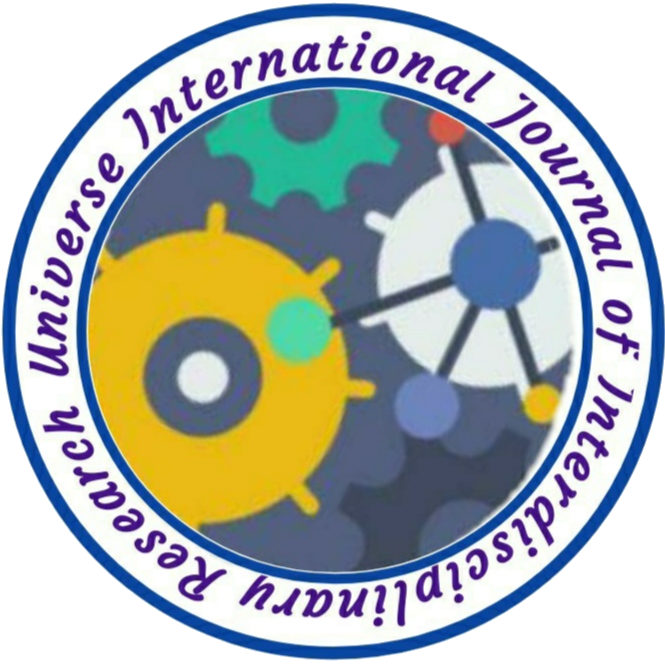MIGRATION AND LIVELIHOOD IN THE RURAL COMMUNITIES: A CASE OF MID-WESTERN TARAI REGION, NEPAL
Author Name: 1Kanhaiya Sapkota, 2Narayan Prasad Paudyal
Volume: 01 & Issue:
Country: Nepal
DOI NO.: 08.2020-25662434 DOI Link: http://www.doi-ds.org/doilink/11.2020-88312833/
Affiliation:
- Central Department of Geography, Faculty of Humanities and Social Sciences, Tribhuvan University, Kathmandu.
- Department of Geography Education, Faculty of Education, Tribhuvan University, Nepal
ABSTRACT
The export of labor has become a lucrative industry in Nepal. The research methodology involves both qualitative and quantitative frameworks that have been used in ethnographic field research techniques. In the study area (Titiheriya, Samserganja and Rajhena of Banke District, Province No. 5) – A total 972 young adults left “home” to work as migrant workers in the Gulf, Malaysia, India and Middle Eastern countries in 2017/18. Among the households fitting this criterion, 180 migrant households have been selected for the detailed study. This study explores the impacts of migration on the livelihoods of households in Banke District, mid-western Nepal. Household surveys and focus group discussions were used to explore the different dimensions of migration and livelihood issues, such as preference of work by the migrants, household units of the migrants, socio-economic mobility, remittance investment pattern, impacts on living standard, vulnerability in households as, and investments for migration issues. In terms of securing livelihoods, people value land as a major asset – higher quality jobs with handsome earnings motivate them to migrate to major cities so as to secure a high standard of livelihood. The findings of this study have shown a largely positive outlook of migration in terms of livelihood security. This paper reflects the wider themes with respect to socio-economic determinants of access and opportunity. Regardless of whether migration is an accumulative process or a coping strategy, most migrants receive little support and live in very difficult conditions at their destinations. Besides, the people who have travelled for foreign employment, five of them returned home in coffins, making the lucrative labour migration one of the deadliest and costliest affairs for the community. Would it be better to bring methods here? Thus, a rights-based approach to guarantee the overall security of migrants is needed.
Key words: Migration, livelihoods, rural communities, Banke District, sustainable livelihood, population mobility, living standard

I loved your article post. Much thanks again. Want more. Druci Levey Knitter
Now i am a big lover of this internet site, It aided me a lot to gather the right info about healthy lifestyle .
This is good stuff, its awesome to be in the know.
Awseome article, I am a big believer in leaving comments on blogs to help the blog writers know that theyve added something useful to the innertubes!
You need to get upset! Simply letting the quota happen isnt acceptable. Generally this will allow you to take the inititive to make things happen.
I really liked your article.Thanks Again. Awesome.
Please tell me that youre going to keep this up! Its so great and so important. I cant wait to read more from you. I just really feel like you know so substantially and know how to make people listen to what youve to say. This blog is just also cool to be missed. Excellent stuff, seriously. Please, PLEASE keep it up!
I beloved as much as you’ll obtain carried out right here. The sketch is tasteful, your authored subject matter stylish. nonetheless, you command get bought an nervousness over that you would like be delivering the following. sick unquestionably come further before again as exactly the same just about a lot ceaselessly within case you defend this increase.
I’m not sure exactly why but this website is loading extremely slow for me.
Is anyone else having this problem or is it a problem on my end?
I’ll check back later and see if the problem still exists.
asmr 0mniartist
Hi there to all, the contents existing at this web site are in fact amazing for
people experience, well, keep up the good work fellows.
asmr 0mniartist
Hello Dear, are you genuinely visiting this site regularly, if so afterward you will definitely get
fastidious knowledge. asmr 0mniartist
Hi there, all is going nicely here and ofcourse every one is sharing data, that’s in fact fine, keep up writing.
asmr 0mniartist
If you would like to obtain a great deal from this post then you have
to apply these techniques to your won webpage.
asmr 0mniartist
Touche. Sound arguments. Keep up the great spirit.
0mniartist asmr
If some one wishes to be updated with most recent technologies afterward he must be go to see this
web site and be up to date everyday. asmr 0mniartist
It’s amazing to pay a visit this site and reading the views of all friends regarding this paragraph, while I am also eager of getting know-how.
0mniartist asmr
Hi! After study a few of the blog posts on your website now, and I truly like your way of blogging. I bookmarked it to my bookmark website list and will be checking back soon. Pls check out my web site as well and let me know what you think. Have you considered promoting your blog? add it to SEO Directory right now 🙂 http://www.links.m106.com
Very good article. I will be experiencing many of these issues as
well.. 0mniartist asmr
Great article, my partner and i appreciate the share, one thing, would you explain to me where you got this kind of theme? was it totally free or perhaps paid?
This is a topic that is near to my heart… Best wishes! Where are
your contact details though?
This definitely be the next preference. You are perfect, theme team. I Really enjoy the system, fonts along with the perfect subject. Thanks for a great valuable project. Great work! Keep up the ultra do the webjob!
Not a unhealthy post, did it take you a lot of your time to consider it?